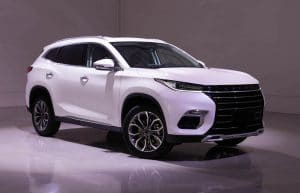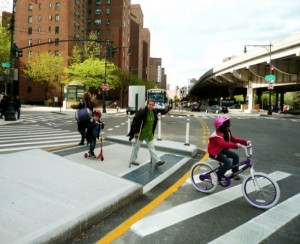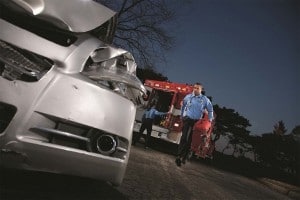A safety advocacy group renewed its call to improve the design of sport-utility vehicles to make them less likely injure or kill pedestrians after a new study showed that those vehicles were significantly more likely to do exactly that.
According to a new study by the Insurance Institute for Highway Safety, shows that despite new designs to that have made SUVs more fuel efficient and safer for occupants, they’re still much more likely to kill pedestrians than passenger cars.
The number of people killed in motor vehicle crashes in the U.S. has fallen from more than 50,000 in 1980 to 36,560 in 2018. During the last 10 years, however, the number of pedestrians killed on American roads continues to rise.
(High-speed crashes rise as drivers go faster due lighter traffic from stay-at-home orders.)
“The proportion of SUVs in the U.S. fleet has grown dramatically, so it’s discouraging that they still seem to be more deadly to pedestrians than cars are,” said IIHS Statistician Sam Monfort, lead author of the study.
The number of pedestrians killed by vehicles rose 53% from 2009 to 2018, the latest year for which statistics are available. During the same period, the share of SUVs in the U.S. passenger vehicle fleet rose to 29% from 21%, according to vehicle registration data from IHS Markit.
Pedestrians now account for nearly a fifth of all traffic fatalities, a number not seen in more than 35 years, according to IIHS. The study examined 79 crashes in Michigan, finding that SUVs caused more serious injuries than cars when impacts occurred at 19 miles per hour or slower, there isn’t much difference to pedestrians whether they are hit by a passenger car or an SUV.
However, when speeds rise to 20-39 mph, 30% resulted in a pedestrian fatality, compared with 5 out of 22 for cars, or 23 percent. At 40 mph and higher, all three crashes with SUVs killed the pedestrian whereas the number dropped 7 out of 13 crashes involving cars, or 54 percent.
(Pedestrian fatalities continue rising – setting record for second consecutive years.)
A 2018 study by IIHS found that pedestrian crashes have become both deadlier and more frequent. While pedestrian crashes more frequently involve cars, fatal single-vehicle crashes involving SUVs striking pedestrians increased 81% from 2009 to 2016, more than any other type of vehicle.

The height of the front end of an SUV is a major factor in the difference between passenger car and sport-utility deaths.
However, it’s possible that could be explained by the steady rise of SUV sales during that time. Automakers have updated the exterior designs of new sport-utes, which have included some external safety measures, most of them are aimed at low-speed collisions. Most of the changes have focused on improving the safety of SUV-passenger car collisions.
However, an examination of how a pedestrian is struck by an SUV now compared to years ago reveals not much has changed, the group maintains. The injury patterns were consistent with earlier, national studies in showing that SUVs were more likely than cars to throw pedestrians forward and nearly twice as likely to cause severe hip and thigh injuries.
These injuries were mainly caused by impacts with the bumper, grille or headlights. That’s likely because the high point of the front profile or “leading edge” of most new SUVs is still considerably higher than that of the average car.
(U.S. highway deaths declined in 2019.)
“Our findings provide more evidence that manufacturers need to make design changes to help combat the increase in pedestrian fatalities now that more of the vehicles on the road are SUVs,” said IIHS Senior Research Engineer Becky Mueller.


